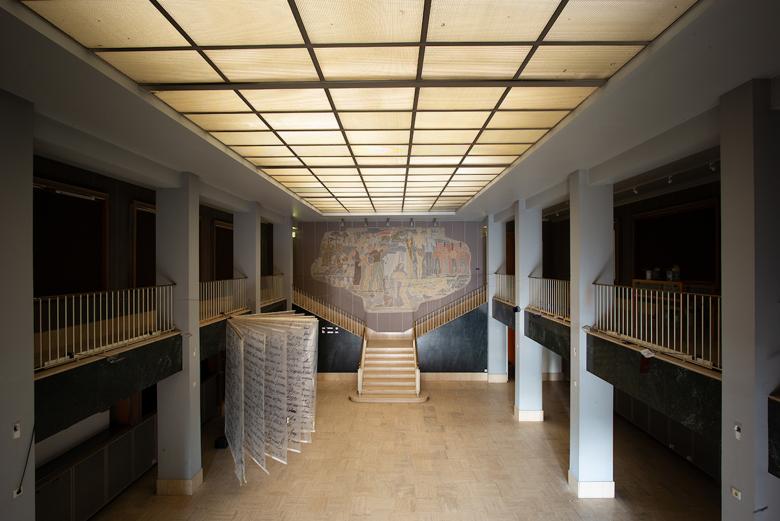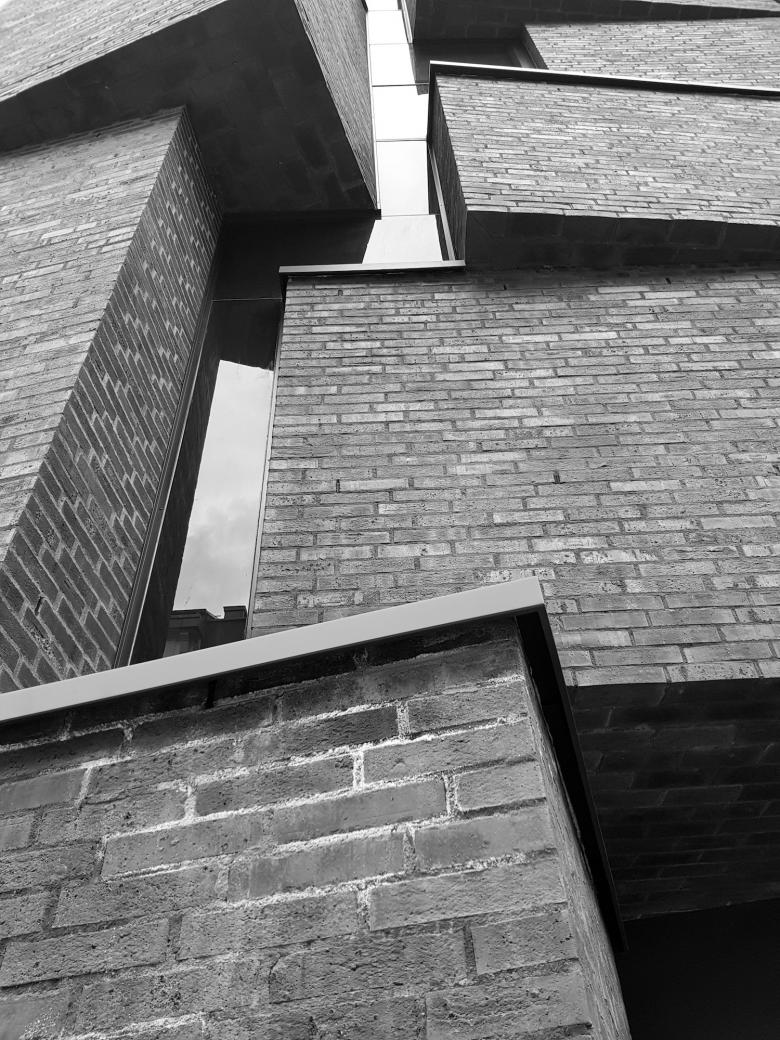The Future of Remembrance
The Museum of Resistance and Human Rights in Esch-sur-Alzette, Luxembourg, got an interesting make-over, courtesy of architect Jim Clemes and designer Nathalie Jacoby. Ulf Meyer visited the reworked museum, sending us his impressions.
Luxembourg may not be the first country that comes to mind when considering Western European nations overrun by Nazi Germany, but the suffering caused by the foreign regime was significant for Jewish and non-Jewish Luxembourgers alike. Following the war, the Museum of Resistance was built in the industrial city of Esch-sur-Alzette, opening in 1956.
Although the building, with its grand loggia facing Esch’s main square, the Brillplatz, and bare stone facades, does not fit well into the city’s small-scale urban setting, the building is a testament to the importance of remembering the monstrosities of the twentieth century — healing that began when the European Union started to form, with Luxembourg as one of its centers. The task of keeping memory alive continues to play an important role this century, especially since few survivors remain to give first-hand testimony to younger generations.
In 2016 the city and the Ministry of Culture decided to renew the museum. Demolition work on a row house facing a side street started in 2018, making room for the new museum extension designed by one of Luxembourg’s best-known contemporary architects, Jim Clemes. The reopening at the end of March, with an exhibition on Frans Masereel and Hamid Sulaiman, coincides with the cultural events taking place during Esch-sur-Alzette’s tenure as 2022 European Capital of Culture. However, the whole museum will not be fully accessible before next year.
Since the first renewal of the exhibition and renovation of the museum in 1986, stories of remembrance from survivors have gained in importance. Besides the exhibitions in Esch, the museum’s publications and traveling exhibitions help to form a link between the public and the scientific and academic worlds. In collaboration with the University of Luxembourg, the museum has become a place of research on local history.
Since 2008, the museum has been working under the motto “Place of Remembrance and Education.” The didactic approach is “intergenerational, intercultural and multilingual,” according to the curators. Historical, educational, and artistic projects alternate. While the focus remains on the Second World War and national socialism, oppression, and war, in the last decade the museum has dealt increasingly more with other topics, such as Nelson Mandela, the Sinti and Roma, refugees, and extremism. Accordingly, the museum officially changed its name to the Museum of Resistance and Human Rights in 2020.
With a tripling of the area and a renewed exhibition design by Nathalie Jacoby of NJOY, the museum will offer more extensive programming. Jacoby’s museography, like the architecture of Clemes, has a purist approach that does not have much of an impact on one’s appreciation of the original building. She uses the building’s size to emotionally introduce visitors to the topic: a row of urns contains the ashes of Holocaust victims, for instance, while the reconstruction of one of the last existing barracks from the Hinzert concentration camp features portraits of victims. The colloquium on “the future of commemoration and remembrance” and an exhibition on the fate of Luxembourg's Jews in World War II, previously shown at the Topography of Terror in Berlin, are achievements in modern remembrance culture that are now reflected in architecture.
The aesthetics of the monumental building by Laurent Schmit has been preserved in the 8.6 million-euro conversion. The original museum was intended to be a memorial against Nazi terror and a place of remembrance and commemoration — functions one does not want to reinterpret. Although the extension on Rue de l'Alzette is used practically for administration, workshop rooms, exhibitions, and a secondary entrance for groups, Clemes gave it a powerfully poetic image: a dark brick wall bursting open as if to reveal a wound. The exhibition in the extension deals with background facts about the Nazi apparatus, but the museum is not just a place of remembrance for the years of 1940-1945, as it was when first built. Now it is a platform for political education and integration, addressing current crimes against humanity. One need only switch on the news to see — in real time and in sometimes graphic images — just how relevant this topic still is in Europe.




